
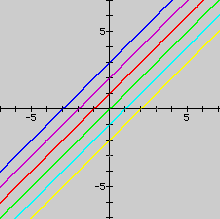
write-up #0 Assignment 0 Introduction
In the following, where you examine multiple graphs, consider
the different impact and observations you can make by a sequence
of graphs, adding one graph
at a time, in contrast to creating all graphs in a set at once.
Try to draw some graph by Graphic Calculator!
(Experiment 1) The equations and their graghs,


(Experiment 2) The equations and their graghs,

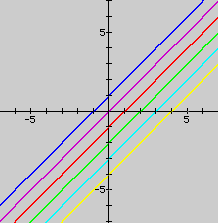
(Experiment 3) The equations and their graghs,

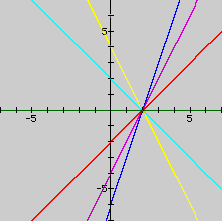
(Experiment 4) The equations and their graghs,

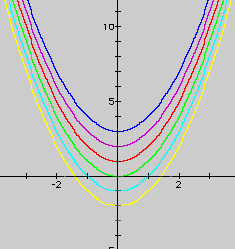
(Experiment 5) The equations and their graghs,

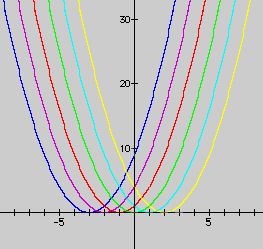
(Experiment 6) The equations and their graghs,
Replace the 5 in each side of the equation with other small values. It is more interesting if you keep multiple graphs on the same axes.
1) ![]() n=1 (green), 2 (light blue), 3
(blue), 4 (violet), 5 (red)
n=1 (green), 2 (light blue), 3
(blue), 4 (violet), 5 (red)

2) ![]() n=1 (light blue), 2 (green), 3
(violet), 4 (blue), 5 (red)
n=1 (light blue), 2 (green), 3
(violet), 4 (blue), 5 (red)

3) ![]() n=1 (light blue), 2 (green), 3
(blue), 4 (violet), 5 (red)
n=1 (light blue), 2 (green), 3
(blue), 4 (violet), 5 (red)

(Experiment 7)
There is the equation of ![]() .The gragh is here.
.The gragh is here.

Now.Let's play with this graph!
1) Replace "5" in each side of the equation
The "5" of the left hand replace other values. As the values increase(n>0), the curves in 2nd and 3rd quadrant is leaving from y-axis, as follows, but the curve passes the common points of (0,0),(5,0).
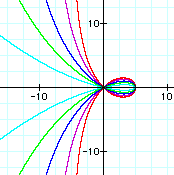
The 5 of the right hand replace other values . When the values change(n>0),the graphpasses the two point(0,0)and (the value of change,0).
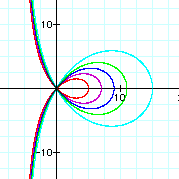
Next, replace "5" in both side! ![]()


2) Replace "x" by "x-n" in each side of the equation
Replace x replace by x-2, the shape of the graph doesn't change, but the position of the graph slips 2 to positive direction of x-axis. When x is replaced by x-n, the position of the graph slips n to positive dorection of x-axis. The equation and the graph are here.
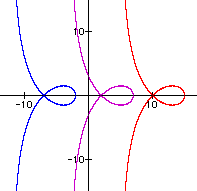
Explanation
I investigated the equations and thier graghs,considering the coefficient of x,y as a variable number.Here,I look at them again, particularly quadratic equations ,paying attention to the common things of the 7 experiments.
1. Replacing x by x-n, the gragh of the equation was moved "n" toward positive x axis. In the same way,replacing y by y-n, the gragh of the equation was moved "n" toward positive y axis.
What any kinds of graghs does it happen ?
2.Replacing x by nx, the slope of gragh changed.
3.Then , if the coefficient of xy is replaced by other values, what happens? New problem happened.